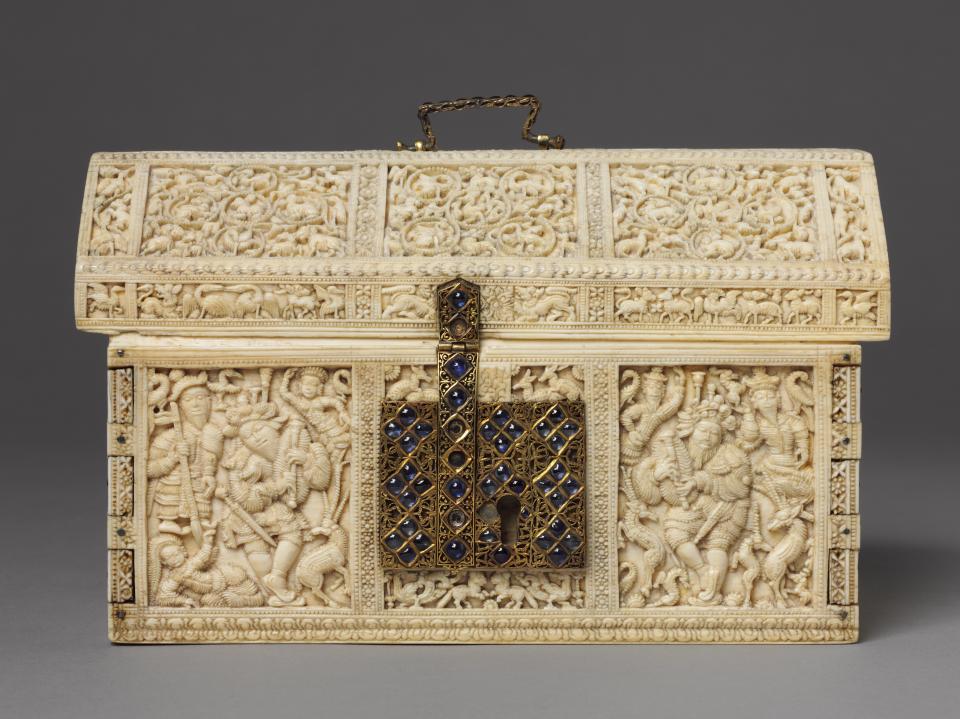A Paris Exhibition Shows How the Renaissance Elite Spent on Status Symbols

PARIS — Call them the Renaissance equivalent of luxury goods.
Today’s billionaire might splurge on a limited-edition Richard Mille wristwatch. Back in 1584, Emperor Rudolph II, one of the greatest collectors of all time, commissioned a Georg Roll and Johannes Reinhold globe-shaped clock.
More from WWD
Brussels Collectible Plans New York Edition, Fashion Appeal Grows
Supporting British Art: Burberry to Sponsor the British Pavilion at the 60th Venice Biennale
It’s one of more than 130 extraordinary objects featured in an exhibition at the Hôtel de la Marine in Paris showcasing the private collections of the Renaissance elite.
“A Taste for the Renaissance: A Dialogue Between Collections,” which runs until June 30, brings together highlights from The Al Thani Collection and the Victoria and Albert Museum in London, including jewelry, paintings, sculpture, metalwork and rare objects.
“What you get a sense of in this exhibition is the relationship between the work of art and its owner, and how they were appreciated and looked at, admired and held,” said Emma Edwards, project curator at the V&A and curator of the exhibition.

The jewelry creations range from the majestic to the deeply evocative.
Standout pieces include the Heneage Jewel, featuring two portraits of Britain’s Queen Elizabeth I, that was once owned by American financier J.P. Morgan. The bust on the front of the locket shows the regent in profile in gold on a dark blue enamel background, while the portrait inside is painted by Nicholas Hilliard, her favorite portraitist, and reflects a more intimate side.
Edwards said miniature portraits were precious currency at the time. “It signified a gift, but sometimes it was also commissioned by the courtier as a symbol of loyalty and allegiance,” she explained.
Others were designed to set hearts racing. Hilliard’s miniature portrait of an unknown man, wearing just an open white shirt and a locket pendant, pulses with longing. “It’s sort of Colin Firth as Darcy coming out,” Edwards said jokingly.

Renaissance goldsmiths used their virtuoso skills to send coded messages. Baroque pearls inspired jewels shaped like fantastic creatures, including a salamander pendant dating back to the 1490s.
“The salamander was a symbol of ardent passion because they believed that it could withstand the heat of a fire, and so this is a Renaissance love token of really exceptional quality,” Edwards noted.
New trade routes introduced exotic materials such as mother-of-pearl, ivory, turbo shells and finely painted Chinese porcelain, which were transformed into collectors’ pieces in Europe.
A solid ivory casket carved with Biblical scenes, with silver hinges, gold filigree and sapphire ornamentation, was made in Sri Lanka and sent by the kingdom’s rulers to Portugal as a diplomatic gift.
Many European royals had a retinue of artists of different nationalities working to burnish their status. A period catalogue features designs by German armorers for Henry VIII and his court. “This is the high fashion in Renaissance metalwork,” the art historian remarked.

The top collections were documented in detailed inventories, allowing art historians to track objects’ journeys from one prestigious owner to another. “Through these figures, these pieces have survived. They’ve been treasured and passed down,” Edwards said.
One such gem is a Leonardo da Vinci notebook known as the Codex Forster III. Compiled between 1490 and 1493, it contains notes and diagrams on geometry, weights and hydraulics interspersed with sketches of everything from architecture and anatomy to costumes and hats.
“This gives you an insight into the incredible mind of Leonardo,” said Edwards, noting the tiny volume traveled to Madrid and Vienna before ending up in the V&A’s collection in London in 1876.
Among the more intriguing pieces is a 16th-century Sri Lankan bracelet made of carved rock crystal mounted with cabochon rubies and sapphires set in gold. It is said to have been presented by Elizabeth I to her cousin Henry Carey. Its value is considered priceless.

Best of WWD

 Yahoo Lifestyle
Yahoo Lifestyle 
